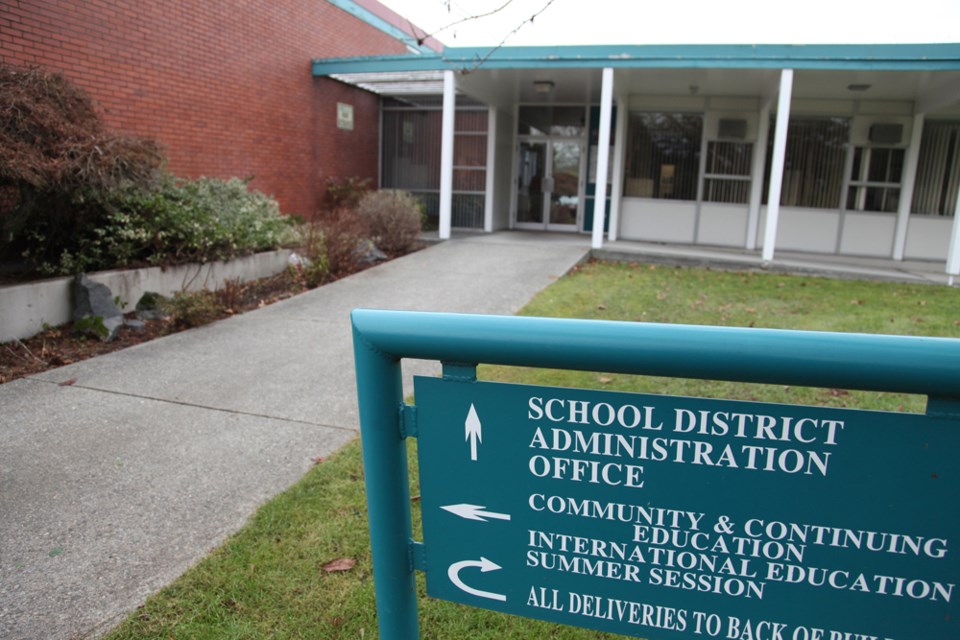As tremors rattle the B.C. coast and experts continue to warn of an inevitable mega-earthquake that could hit the province in the next 50 years, 15 high-risk Burnaby schools are still waiting for seismic upgrades.
In 2004, all B.C. schools built in seismic zones before 1992 were assessed to see how well they would stand up to “the big one” – a catastrophic quake predicted by geologists when pressure built up between the Juan de Fuca and North American tectonic plates for the last 300 years suddenly releases.
Twenty-four School District No. 41 schools were deemed to be at high or moderate risk of damage during a major quake.
Eight have since been seismically upgraded (or replaced, as in the case of Burnaby Central Secondary), and four have been approved in principle to be retrofitted: Alpha Secondary, Montecito Elementary, Burnaby North Secondary and Stride Avenue Elementary.
Provincial funding for Alpha was announced in May 2012 and for the other three schools in April 2013, but work on the projects has yet to begin, and no firm timelines have been announced.
One reason for the holdup, according to School District No. 41 secretary-treasurer Greg Frank, is the Alpha Secondary project, which has turned out to be more complex than expected.
The district had hoped to see the 60-year-old school replaced entirely but was told by the province that funding wasn’t available.
In the latest plans, sent to the education ministry in December, the district proposes a $27-million partial replacement of the school that would see the construction of a brand new classroom block for students to move into while some parts of the old campus are seismically upgraded and others are demolished.
Frank said the district is hoping for final approval in the coming weeks or months.
“Then we’ve got to do all the detailed design work and then tendering for the work and then moving forward,” he said, “so we’re still quite a ways before a shovel hits the ground, but we need funding approval first. It is very complicated and it’s taken more time than any of us have really anticipated. And it’s a large dollar item, as well, so it’s under a lot of scrutiny by government in terms of everything we put forward on it.”
For technical studies alone, the district has already spent $175,000 on Alpha and another $30,000 on Montecito.
Meanwhile, 11 more schools considered high risk have yet to be approved for upgrades under the province’s seismic mitigation program.
Armstrong Elementary, originally considered a moderate risk, was changed in August to high 1 because of its gymnasium block, which has been deemed “at highest risk of widespread damage or structural failure,” according to the province’s risk-rating scale.
Glenwood Elementary has been assessed at high 2, or “high risk of widespread damage or structural failure,” also because of its gymnasium and classroom blocks.
Cascade Heights, Kitchener, Marlborough, Maywood, Moscrop, Parkcrest, Rosser, Seaforth and Stoney Creek have all been assessed at high 3, where a major quake would be expected to cause “isolated failure of building elements such as walls” that would likely leave the building not reparable after the event.
Frank, however, told the NOW that Burnaby students are safe, and that the district is making the high-risk buildings “as safe as they can be” with non-structural work, like anchoring cabinets to walls and securing ceiling fixtures so they wouldn’t fall in a big shake.
“And as we replace roofs,” Frank said, “all of our work now is to tie the envelope together as part of that roofing job.”
Education ministry staff couldn’t say when more funding would be announced for upgrades at the remaining 11 schools.
For more information about the province’s seismic mitigation program, visit www.bced.gov.bc.ca/capitalplanning/seismic.



